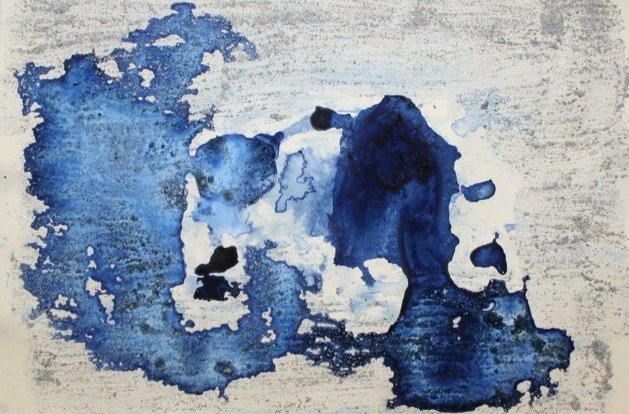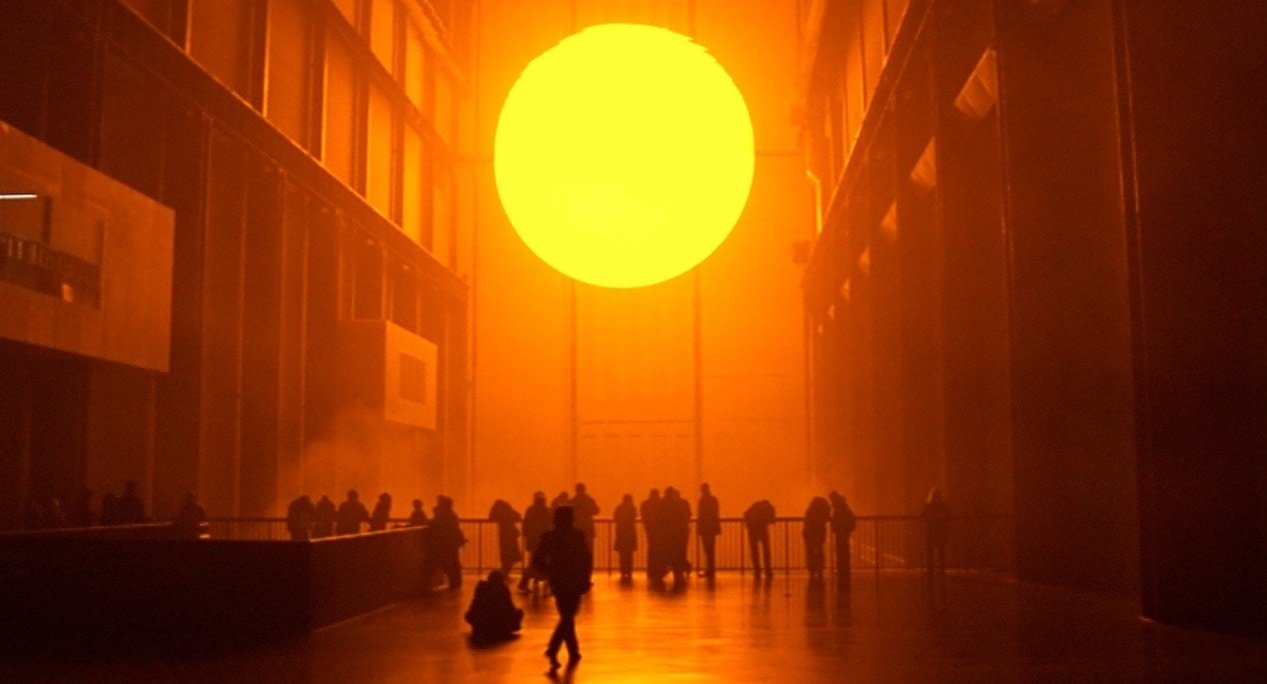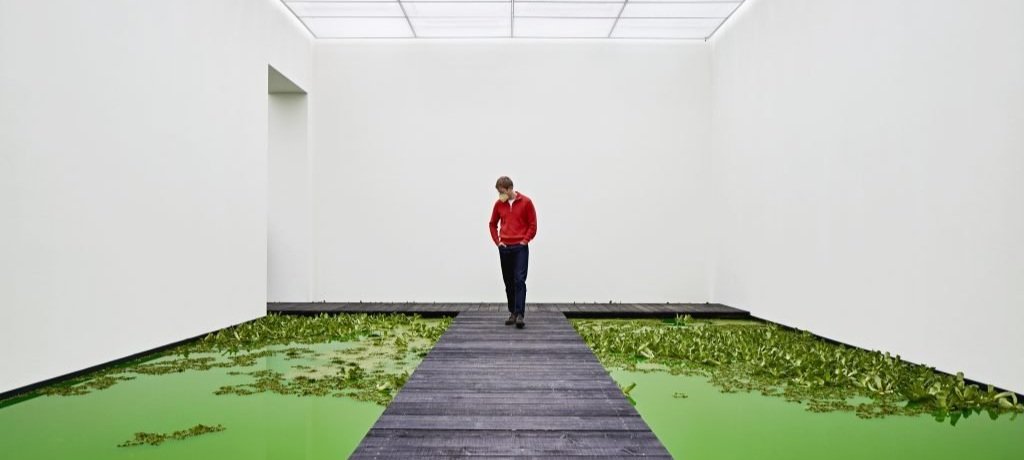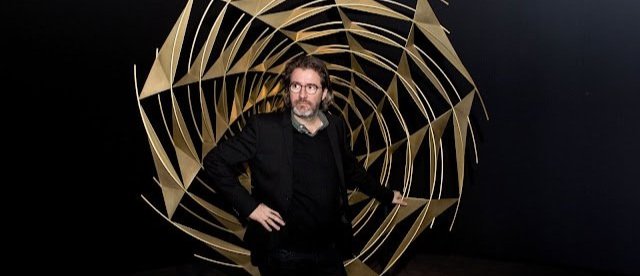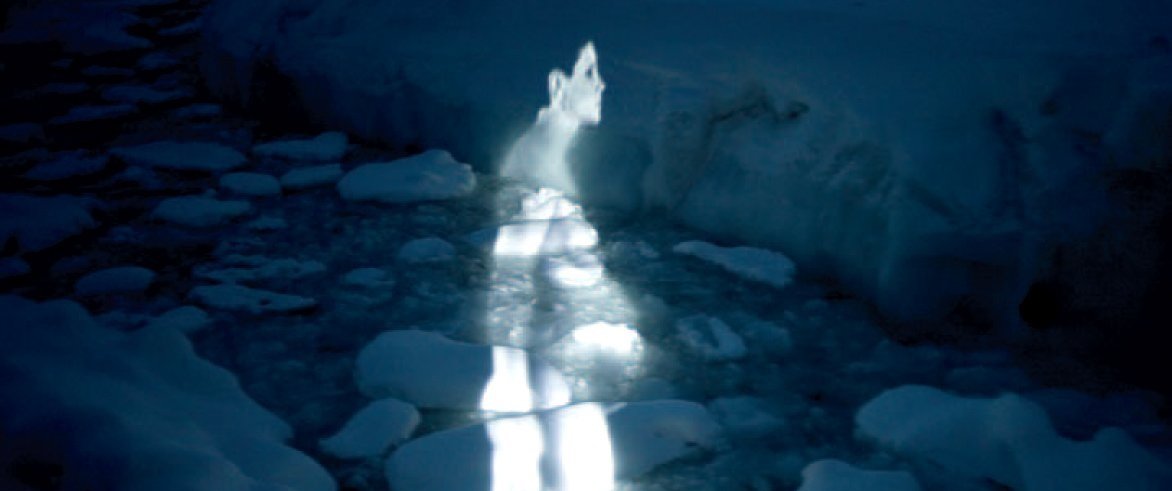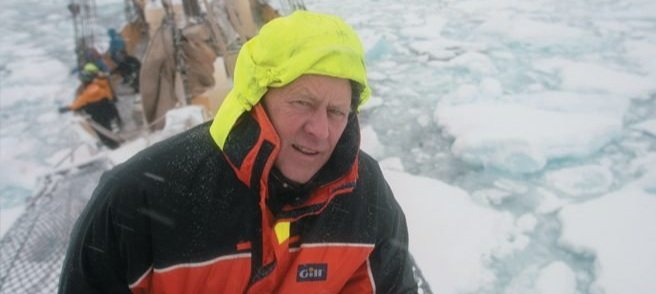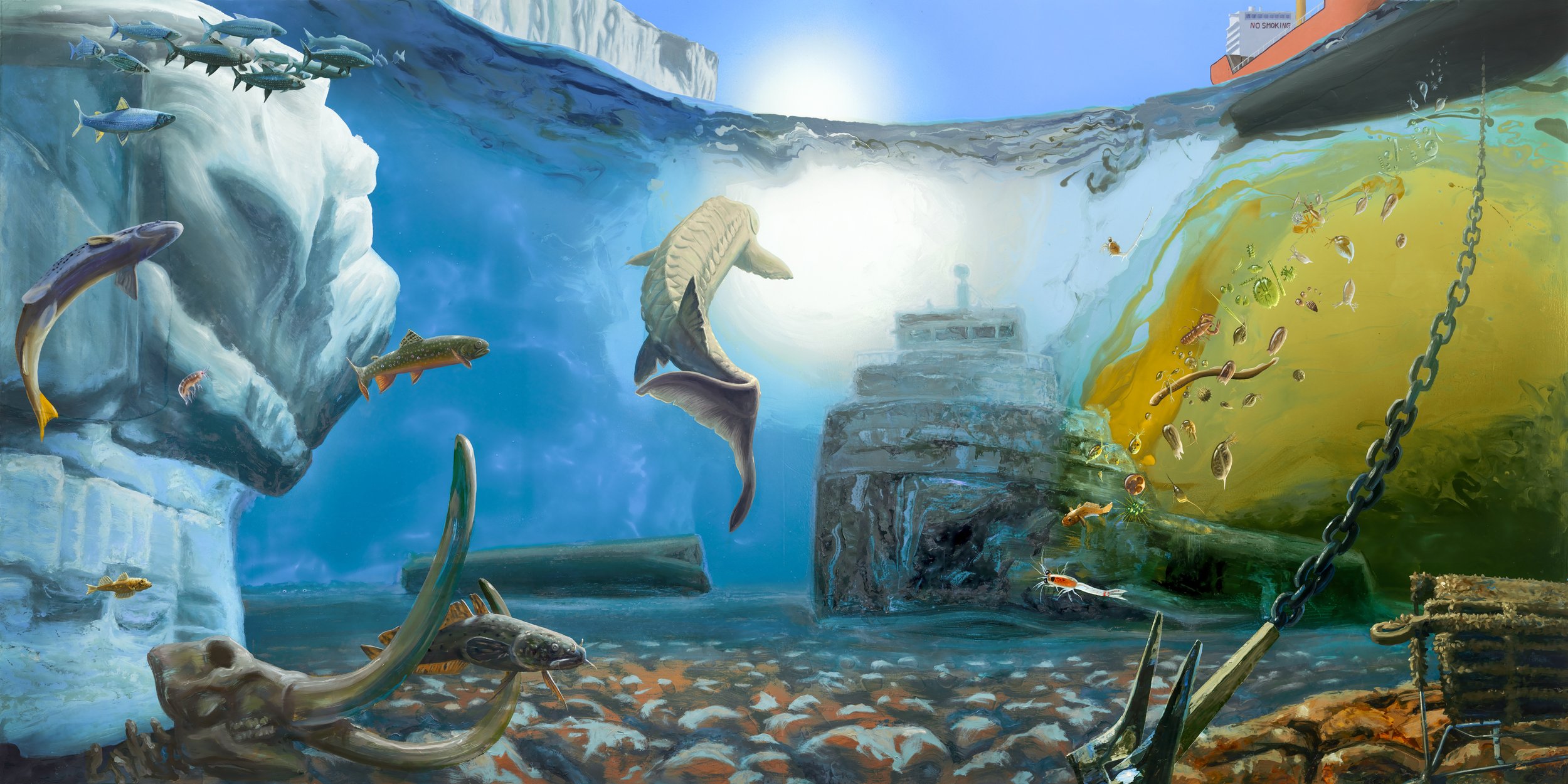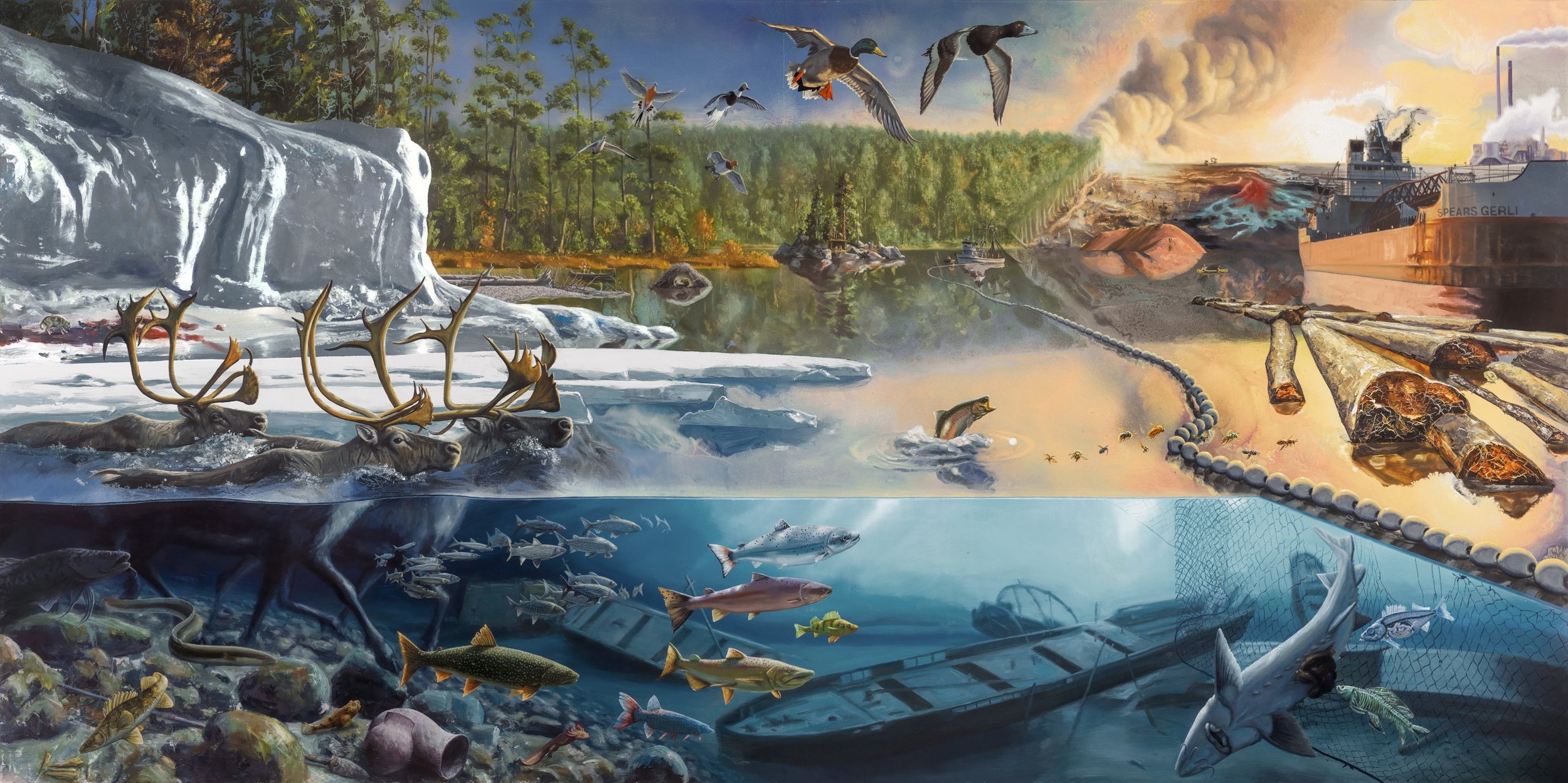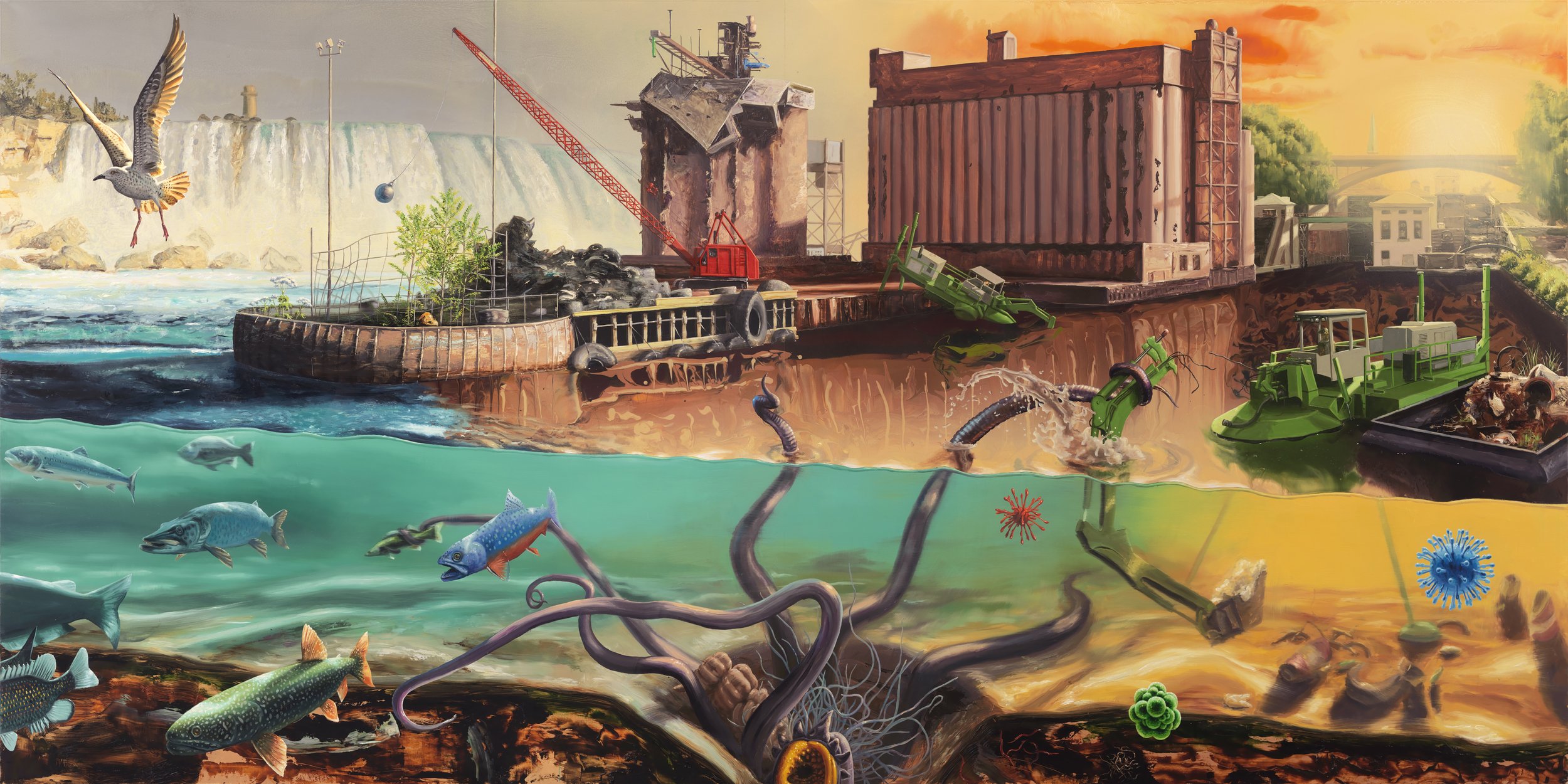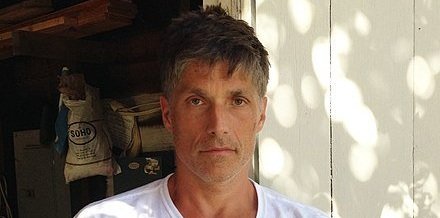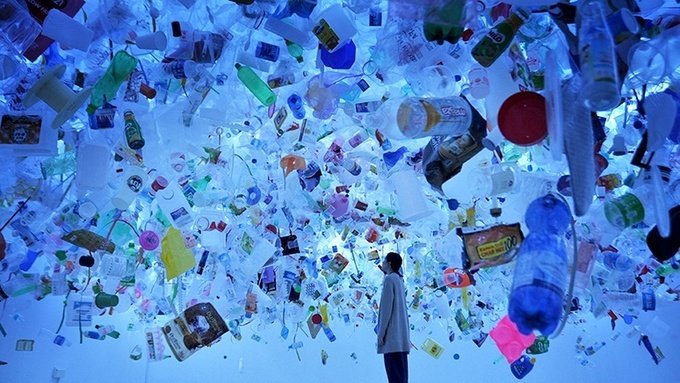Header image credit: Diane Burko, "Unprecedented" (2021)
by Anna Karch
originally created for Art Create Learn Magazine’s Fall 2023 issue
“I never paint dreams or nightmares. I paint my own reality.”
—Frida Kahlo
When it comes to understanding and acting against climate change, something is missing. Recent public opinion research by Climate Access shows that our planet’s crisis is a significant concern for most Canadians, but a large chunk of the worried is also part of a “moveable middle”—those who recognize the alarming state of things but aren’t invested in action. Why is this? From a lack of information, to anxiety, burnout and pessimism—a lot of us recognize the reality, but we aren’t necessarily moved to act.
Art as a Catalyst for Change
The definition of art can be fairly subjective—it means different things for different people. However, no matter what definition we use, most would agree that art moves people. According to the Columbia Climate School, psychology research suggests that art helps us “process, internalize, and respond to information more effectively than facts alone.” It bridges the gap between facts and feelings, and acts as “an essential ingredient to empowering the hearts of people” (Van Jones). We rely on this to inspire concrete structural change, as meaningful action begins with individually significant motivation; art fosters interest, inspiration, and action.
Representing Reality
When we think about climate change, the first things that come to mind might be melting ice caps, rising sea levels, and increasing greenhouse gases, which are important but abstract, meaning that they’re not easily felt or seen by a lot of us. As a result, climate change impacts can seem like distant issues, making it difficult to feel connected.
Art can help concretize these topics, making them more real and accessible for people's engagement. For example, take a look at these Climate Stripes developed by Professor Ed Hawkins at the University of Reading. No words. No numbers. No graphs. Just a series of vertical coloured bars, showing the progressive heating of our planet over nearly two centuries in a single, striking image.
Each stripe represents the average temperature for a single year, relative to the average temperature over the period as a whole. Shades of blue indicate cooler-than-average years, while red shows years that were hotter than average. Check out the stripes for your region here : #ShowYourStripes
More locally, the Windsor-Essex Art Gallery opened a Green Roof Terrace installation in 2022 titled Depends on the Light, which was produced by artist and horticulturist Julie Hall. The green roof terrace, which previously lacked diversity, was reworked to include a palette of local pollinator-friendly plants. Several symbols, appearing on flags and as eco-friendly sculptures, adorned the space as well. It was an installation that relied on reworking infrastructure, and one that produced a thoughtful space in which people and animals could peacefully coexist. As a result, it asked visitors to think critically about space-use and habitat loss, which is a significant climate change issue.
Art Gallery
The experiential and informational aspects of art serve to both pique curiosity as well as foster lasting interest. Art bridges the gap between the abstract and the concrete, between the impersonal and the personal, and it can also act as a book cover that draws people in—after all, half the battle of education is getting students to turn the page.
Seeing the Glass Half Full
Another big contributor to climate inaction has to do with fear and anxiety. As with any perceived threat, these emotions naturally kick in and demand fast action, but they aren’t effective for large and long-term issues like climate change. In fact, constant anxiety can lead to Continuous Traumatic Stress (CTS), as outlined by Senior Policy Planner at the Town of Essex, Jeff Watson, in his Windsor of Change Article titled “Climate Change—It's Driving Me Crazy!”
Like alarming headlines that feed into anxiety, art can tap into negative emotions too, but it can also incite compelling positivity and hope. For example, in Julie Hall’s Depends on the Light, the reworked eco-friendly space proposed a prosperous possible future—one that highlighted the importance of, as Julie stated in an interview with CBC, “the responsibility and opportunity that landowners have to participate in and restore the local ecosystem.” Her work emphasized personal agency: we all have the power to make meaningful change.
Image credit: G-Pots Studio on Facebook
As a preliminary step in catalyzing this change, we can also choose to engage in art creation ourselves. This process asks the creator to carefully observe the world, strengthening awareness of and connection to the environment. Take pottery, for example—local pottery artist Gisele Bick confirms that this craft can “enhance the user's experience and connection to their immediate surroundings, [which] can foster a deeper appreciation for the beauty and presence of the natural world.” This is partly due to the utility of a finished product, but it’s also due to the nature of working with clay; the artist needs to mould earth with their hands, which allows them to practice an empowering metaphor of our ability to mould or change the planet.
We’re in It for the Long-Haul
Sadly, climate change is a long-term problem, which—combined with disconnection from the world and feelings of climate anxiety—makes it even more complicated to deal with. Not only is it a problem that seems to be happening either physically or temporally far away from us, but it’s also a non-linear problem of an unpredictable future that asks us to prioritize long-term benefits over short-term benefits. Even if art can move people into action, it can't do all the work. What will happen in the long-run?
In psychology, behavioural change is broken down into a six-step model: unawareness, contemplation, preparation, action, maintenance, and transcendence or relapse. As we cycle through these phases, reaching the end is inevitable; actions taken to mitigate climate change will either stick or fall through, and with most first attempts, the latter can be expected. However, this doesn't mean we should stop trying.
With any meaningful change, it takes time to adjust. Getting off track doesn't mean failure; if at first you don’t succeed, try, try again. And when we find ourselves back at the starting point, inspirational art can help us get moving again.




